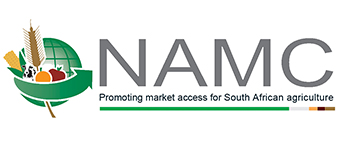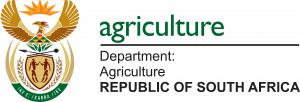The NAMC’s 2022 survey indicates that total statutory levies collected in terms of the Marketing of Agricultural Products Act almost reached R1 Billion
The Marketing of Agricultural Products Act, No. 47 of 1996 (MAP Act), provides for the establishment of statutory measures. A “statutory measure” includes a levy contemplated in Section 15 of the MAP Act, the control of exports of agricultural products in terms of Section 16, records and returns in terms of Section 18, and registration in terms of Section 19. Since 1997, statutory measures, namely levies, records and returns, and registration, have been approved by the Minister of Agriculture, Land Reform and Rural Development and promulgated in the Government Gazette for specific agricultural products and for specific periods of time.
Section 9 of the MAP Act directs that the National Agricultural Marketing Council (NAMC) must monitor the application of statutory measures and report thereon to the Minister and shall evaluate and review such measures at least every two years. Since 2001, the NAMC has conducted an annual review of all statutory measures implemented in terms of the MAP Act (the statutory measures implemented are levies, records and returns, and registration).
Recently, the National Agricultural Marketing Council (NAMC) finalised its 2022 survey regarding the status of statutory measures implemented in terms of the Marketing of Agricultural Products Act (MAP Act). The 2022 survey was based on the latest audited financial statements of the 20 commodity organisations collecting statutory levies.
The levy administrators’ total funds collected through statutory levies in the 2022 survey amounted to approximately R986.1 million, which is 21.9% higher than the 2021 survey. This increase in total levy income can be attributed to, amongst other things, the higher citrus statutory levies which were implemented in 2021 and the soybean and winter cereals breeding levies approved over the last few years.
The MAP Act stipulates that a statutory levy may not exceed 5% of the price realised for a specific agricultural product at the first point of sale. The maximum of 5% must be based on a guideline price, calculated as the average price at the first point of sale over a period not exceeding three years. For the 2022 survey, the total levy income as a percentage of the value of agricultural products at the first point of sale, is approximately 0.7%.
Table 1: Total Statutory Levy Income – 2022 Survey
| Product | Levy income 2022 survey | Total value of product at the first point of sale | Levy income as a percentage of the value of the product |
|---|---|---|---|
|
R |
R |
% | |
| Citrus (exported) |
254 770 473 |
24 217 316 216 |
1,1% |
| Cotton lint |
7 330 439 |
593 400 000 |
1,2% |
| Dairy products |
62 739 378 |
17 029 885 730 |
0,4% |
|
Deciduous Fruit |
139 724 733 |
9 034 537 258 |
1,5% |
|
***Pome and stone |
81 276 141 | ||
|
***Market development |
21 526 448 | ||
| ***Fruit fly Africa |
36 922 144 | ||
| Dried fruit |
11 616 397 |
1 513 561 000 |
0,8% |
| Fynbos (proteas) |
1 311 632 |
229 831 991 |
0,6% |
| Lucerne |
2 710 694 |
1 043 295 000 |
0,3% |
| Lupines (SACTA) |
509 853 |
50 943 201 |
1,0% |
| Macadamias |
33 852 101 |
3 965 290 000 |
0,9% |
| Olives |
1 354 292 |
75 712 576 |
1,8% |
| Pecan nuts |
6 724 370 |
1 095 100 000 |
0,6% |
| Pomegranates |
872 403 |
118 735 931 |
0,7% |
| Pork |
40 212 526 |
7 967 674 980 |
0,5% |
| Potatoes |
48 515 521 |
12 000 000 000 |
0,4% |
| Red meat |
49 677 110 |
28 000 000 000 |
0,2% |
| Soybeans (SACTA) |
87 336 501 |
6 022 299 000 |
1,5% |
| Table eggs |
8 795 046 |
9 200 000 000 |
0,1% |
| Table grapes |
38 697 413 |
8 000 000 000 |
0,5% |
| Wine |
115 461 535 |
6 649 300 000 |
1,7% |
| Winter cereal (SACTA) |
73 843 106 |
8 418 034 326 |
0,9% |
|
TOTAL |
986 055 523 |
145 224 917 209 |
0,7% |
The 2022 survey also shows that approximately R896.0 million was spent on industry functions, which represents an increase of 28.3% compared to the 2021 survey. Of the total expenditure, about 47.0% was spent on research, 9.0% on export promotion/market access, and 6.7% on information. About 20.0% (R179.2 million) was spent on transformation projects.
Table 2: Allocation of Levy Expenditure – 2022 Survey
| Product | 2020 survey | 2021 survey | 2022 survey | 2022 |
|---|---|---|---|---|
|
R |
R |
R |
% | |
| Administration |
41 340 218 |
52 949 652 |
48 829 202 |
5,4 |
| Information |
73 707 321 |
64 593 792 |
60 072 980 |
6,7 |
| Research |
244 075 627 |
268 581 600 |
421 316 576 |
47,0 |
| Transformation |
124 393 310 |
147 236 706 |
179 226 062 |
20,0 |
| Export promotion/ market access |
78 352 505 |
61 031 638 |
81 015 134 |
9,0 |
| Consumer education / promotions |
54 335 881 |
58 111 407 |
61 152 393 |
6,8 |
| Production development |
10 669 201 |
11 390 985 |
6 613 468 |
0,7 |
| Plant improvement |
3 930 873 |
1 717 815 |
938 373 |
0,1 |
| Quality control |
27 881 177 |
32 631 993 |
36 867 535 |
4,1 |
| TOTAL |
658 686 113 |
698 245 588 |
896 031 723 |
100 |
The 2022 survey also highlighted the following, namely –
- Statutory measures, and specifically levies, play an important role in enabling growth in the relevant agricultural industries through effective information management and communication and the collection of funds to finance much-needed functions.
- Regarding the trend in the allocation of statutory funds over the past 10 years, it is evident that functions, such as research, quality control and transformation, are proportionally receiving more in funds, while functions such as information, plant improvement and production development are receiving proportionally less in funds.
- Most of the administrators of statutory measures indicated that the COVID-19 pandemic did not have a major effect on their activities.
Levy’s Facts
Levy administrators’ total funds collected through statutory levies in the 2022 survey
The total levy income as a percentage of the value of agricultural products at the first point of sale
Total funds spent on industry functions
The amount spent on research was about 47.0% of the total expenditure
The amount spent on transformation was about 20.0% of the total expenditure

